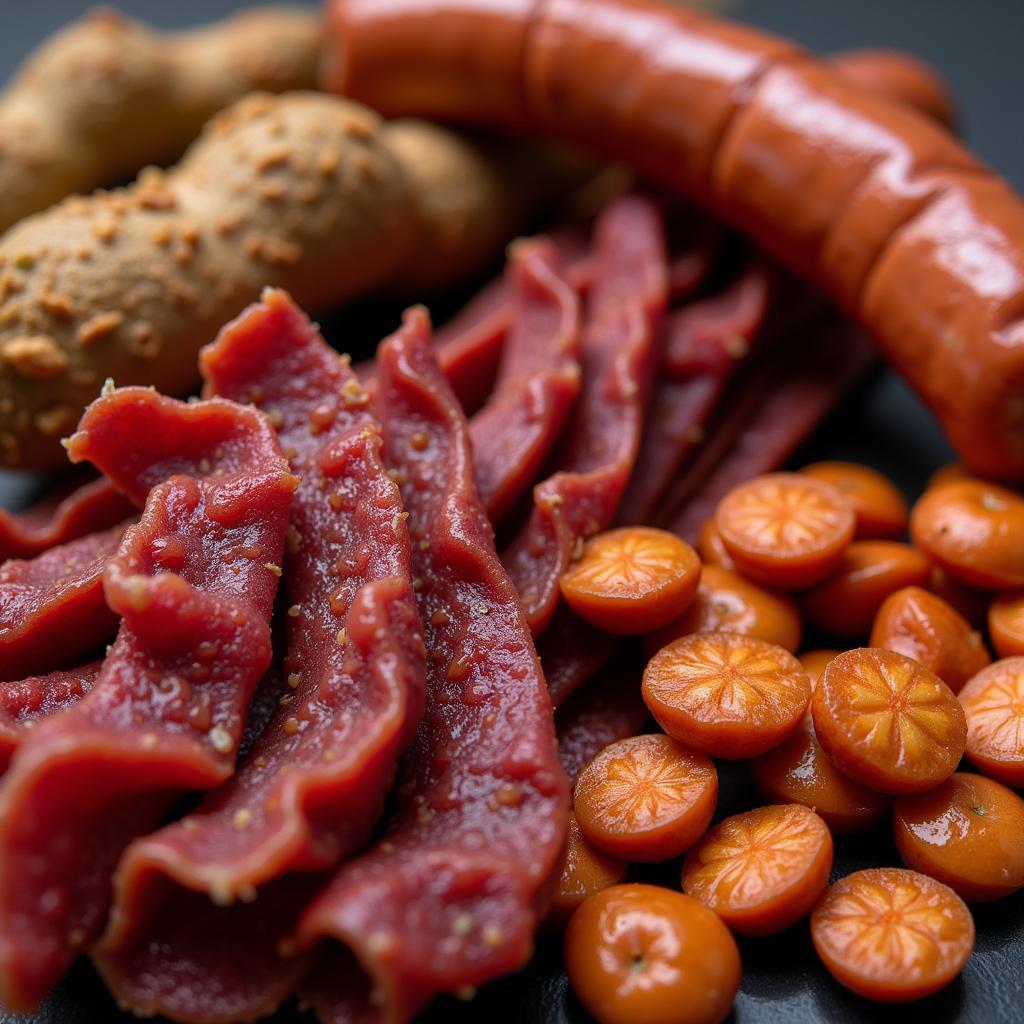Traditional South African Meals: A Culinary Journey Through Rainbow Nation’s Heritage
South Africa, a land of breathtaking landscapes and vibrant cultures, boasts a rich culinary heritage as diverse as its people. Traditional South African Meals, often referred to as “cuisine of the rainbow,” are a delightful fusion of indigenous ingredients and cooking techniques, influenced by centuries of interactions with Dutch, Malay, Indian, and European cultures. Join us as we delve into the heart of South Africa’s food traditions, exploring the flavors and stories behind some of its most iconic dishes.
The Melting Pot of South African Cuisine
The history of traditional South African meals is a testament to the country’s complex past. Indigenous tribes, such as the Khoisan and Bantu people, initially shaped the culinary landscape with their knowledge of indigenous plants and animals. The arrival of European settlers, beginning with the Dutch in the 17th century, introduced new ingredients and cooking methods, while the slave trade brought influences from Asia, particularly Indonesia and Malaysia.
This intermingling of cultures created a unique culinary tapestry, evident in the diverse range of dishes found across South Africa. From the hearty stews and braais (barbecues) of the Afrikaners to the fragrant curries and samosas of the Cape Malay community, each region boasts its own distinct flavors and culinary traditions.
 South African Food Platter
South African Food Platter
Exploring Iconic Traditional South African Meals
No exploration of South African cuisine would be complete without savoring some of its most iconic dishes:
1. Bobotie: A Cape Malay Classic
Bobotie, often considered South Africa’s national dish, is a flavorful and aromatic baked mince dish with roots in Cape Malay cuisine. It typically features ground meat (beef, lamb, or pork), simmered in a rich sauce of spices like turmeric, cumin, and coriander, and topped with a creamy egg custard. The unique blend of sweet and savory flavors, combined with the contrasting textures, makes bobotie a true culinary masterpiece.
2. Biltong and Droëwors: Savory Meat Treats
For a true taste of South Africa’s meat-loving culture, look no further than biltong and droëwors. Biltong, a beloved snack and staple, is a cured and air-dried meat, typically beef, similar to jerky but with a distinct flavor and texture. Droëwors, meaning “dry sausage,” is a flavorful, air-dried sausage made with a blend of minced meat, spices, and vinegar.
 Biltong and Droewors
Biltong and Droewors
3. Braai: More Than Just a Barbecue
While technically not a dish, braai is an integral part of South African culture and deserves a special mention. Braai, derived from the Afrikaans word for “roast,” is a cherished social gathering centered around grilling meat over an open fire. It’s a time for friends and family to connect, share stories, and enjoy the simple pleasure of good food cooked outdoors.
4. Potjiekos: A Taste of History
Potjiekos, meaning “small-pot food” in Afrikaans, is a traditional South African stew slow-cooked in a three-legged cast-iron pot over an open fire. This hearty dish typically includes meat (beef, lamb, or venison) and vegetables like potatoes, carrots, and onions, creating a flavorful and satisfying meal.
5. Pap: A Versatile Staple
No South African meal is complete without pap, a porridge-like staple made from finely ground maize (corn). Similar to polenta or grits, pap can be enjoyed in various ways, from a creamy breakfast porridge to a stiff accompaniment to stews and braais.
Regional Variations and Modern Influences
Traditional South African meals, while rooted in history, continue to evolve with modern influences. Regional variations abound, with each province offering its own unique culinary specialties. In Durban, Indian influences are prominent, with bunny chow (a hollowed-out loaf of bread filled with curry) being a popular street food. Coastal regions offer an abundance of fresh seafood, often prepared with Cape Malay spices.
Modern South African chefs are also embracing global culinary trends, incorporating international flavors and techniques while staying true to their heritage. This fusion of tradition and innovation is creating exciting new dishes and elevating traditional South African cuisine to new heights.
Experiencing Traditional South African Meals
Whether you’re fortunate enough to visit South Africa or wish to recreate its flavors at home, exploring traditional South African meals is a journey for the senses. The warmth of its people, the richness of its history, and the vibrancy of its culture are all reflected in its diverse and delicious cuisine.
Here are some tips for experiencing the best of traditional South African meals:
- Visit local markets: Explore the vibrant atmosphere and fresh produce at local markets to discover unique ingredients and traditional snacks.
- Attend a braai: Embrace the South African spirit of hospitality and enjoy a traditional braai with locals.
- Try a cooking class: Learn the art of preparing traditional South African meals from experienced home cooks or chefs.
FAQs About Traditional South African Meals
1. What is the most popular meat in South Africa?
Beef is the most widely consumed meat in South Africa, followed by chicken and lamb.
2. Are traditional South African meals spicy?
The level of spice in South African cuisine varies depending on cultural influences and personal preferences. While some dishes, like Cape Malay curries, can be quite spicy, others, like bobotie, offer a milder flavor profile.
3. Where can I find recipes for traditional South African meals?
Numerous online resources and cookbooks offer authentic recipes for traditional South African meals.
4. Are there vegetarian options in traditional South African cuisine?
While meat features prominently in South African cuisine, there are vegetarian options available, such as vegetable curries, lentil stews, and pap with various vegetable toppings.
5. What is a good side dish for traditional South African meals?
Pap, rice, salads, and chakalaka (a spicy vegetable relish) are all popular accompaniments to traditional South African meals.
6. What is the best time to visit South Africa for food lovers?
South Africa is a year-round destination for food enthusiasts. However, spring and autumn offer pleasant weather for outdoor dining and braais.
7. Do South Africans have a sweet tooth?
Absolutely! South Africans have a penchant for sweet treats. Malva pudding, milk tart, and koeksisters (syrup-coated pastries) are just a few examples of their delectable desserts.
Need More Culinary Inspiration?
- Discover the fascinating world of African catfish vs pangasius.
- Explore the diverse flavors of African delicacies.
- Find delicious and healthy African food recipes vegetarian.
Embark on a culinary adventure through South Africa, where every bite tells a story of history, culture, and unforgettable flavors.
For more information or assistance with your South African culinary journey, contact us at:
Phone Number: +255768904061
Email: [email protected]
Address: Mbarali DC Mawindi, Kangaga, Tanzania
Our dedicated team is available 24/7 to assist you.

